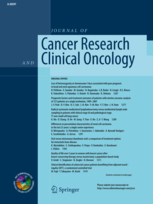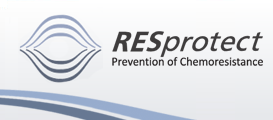RP101 (Brivudine) binds to heat shock protein HSP27 (HSPB1) and enhances survival in animals and pancreatic cancer patients
 Journal of Cancer Research and Clinical Oncology Journal of Cancer Research and Clinical Oncology
ISSN 0171-5216
Volume 137
Number 9
J Cancer Res Clin Oncol (2011)
137:1349-1361
DOI 10.1007/s00432-011-1005-1
Author: Jörg-Christian Heinrich, Anne Tuukkanen, Michael Schroeder, Torsten Fahrig und Rudolf Fahrig
Abstract
Background
Several reports describe the importance of the chaperone HSP27 (HSPB1) in cancer progression, and the demand for drugs that modulate HSPB1-activity is increasing rapidly. We reported earlier that RP101 (Bromovinyldeoxyuridine, BVDU, Brivudine) improves the efficacy of chemotherapy in pancreatic cancer.
Methods
Chemistry: Binding of RP101 and HSPB1 was discovered by affinity chromatography. Molecular and cell biology: HSPB1 in vitro transcription/translation (TNT), Pull down using RP101-coupled magnetic beads, Immuno Co-precipitations, Structural modeling of HSP27 (HSPB1), Introduction of point mutations into linear expression templates by PCR, Heat shock, Tumor Invasion. Animal experiments: Treatment of AH13r Sarcomas in SD-rats. Clinical Studies with late-stage pancreatic cancer patients: Pilot study, Dose finding study, Phase II study (NCT00550004).
Results
Here, we report that RP101 binds in vitro to the heat shock protein HSPB1 and inhibits interaction with its binding partners. As a result, more activated CASP9 was detected in RP101-treated cancer cells. We modeled HSPB1-structure and identified the RP101 binding site. When we tested RP101 as an anti-cancer drug in a rat model, we found that it improved chemotherapy. In clinical studies with late-stage pancreatic cancer patients, the dose of 500 mg/day was safe and efficient, but 760 mg/day turned out to be too high for lightweight patients.
Conclusions
The development of RP101 as a cancer drug represents a truly novel approach for prevention of chemoresistance and enhancement of chemosensitivity.
Click here for SpringerLink
|






 Journal of Cancer Research and Clinical Oncology
Journal of Cancer Research and Clinical Oncology